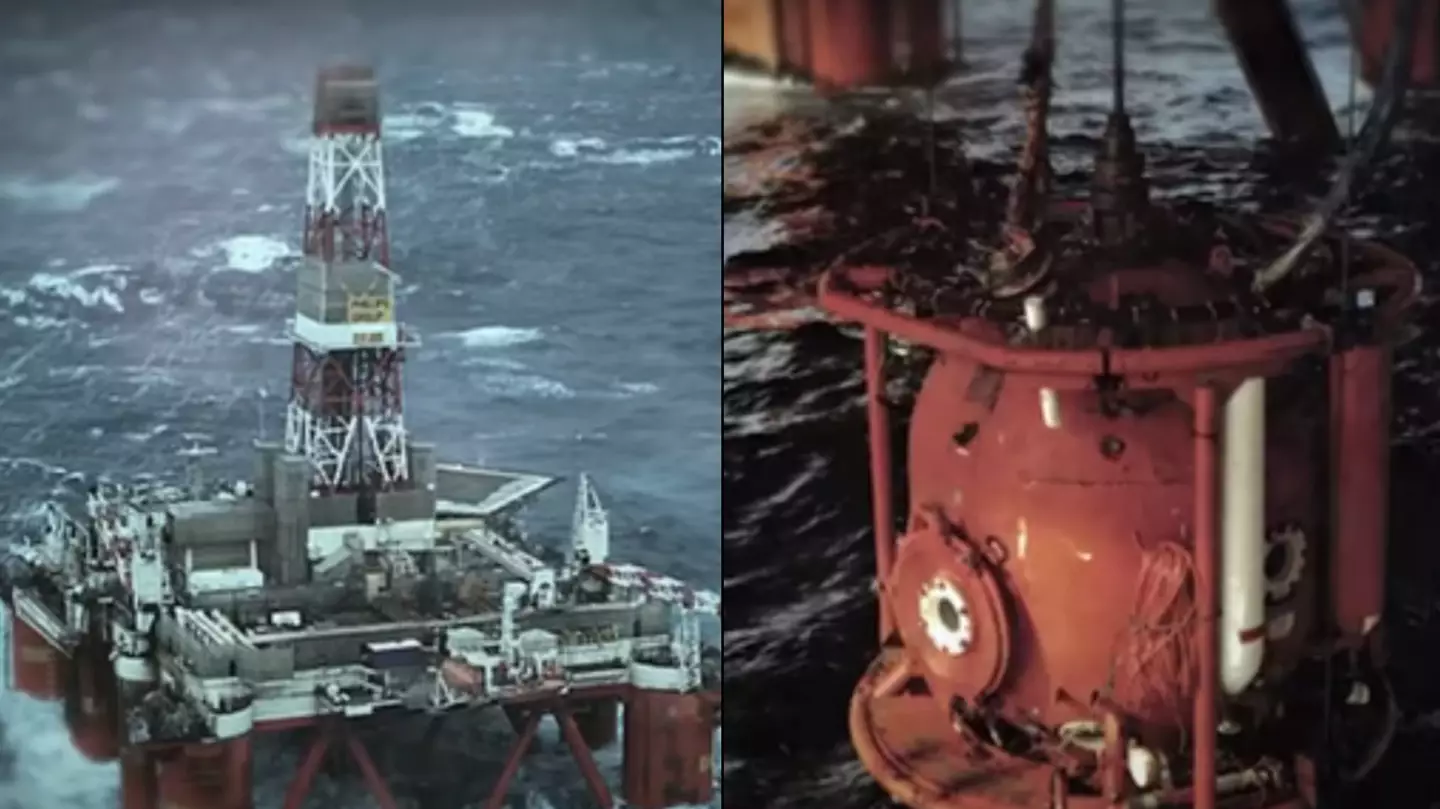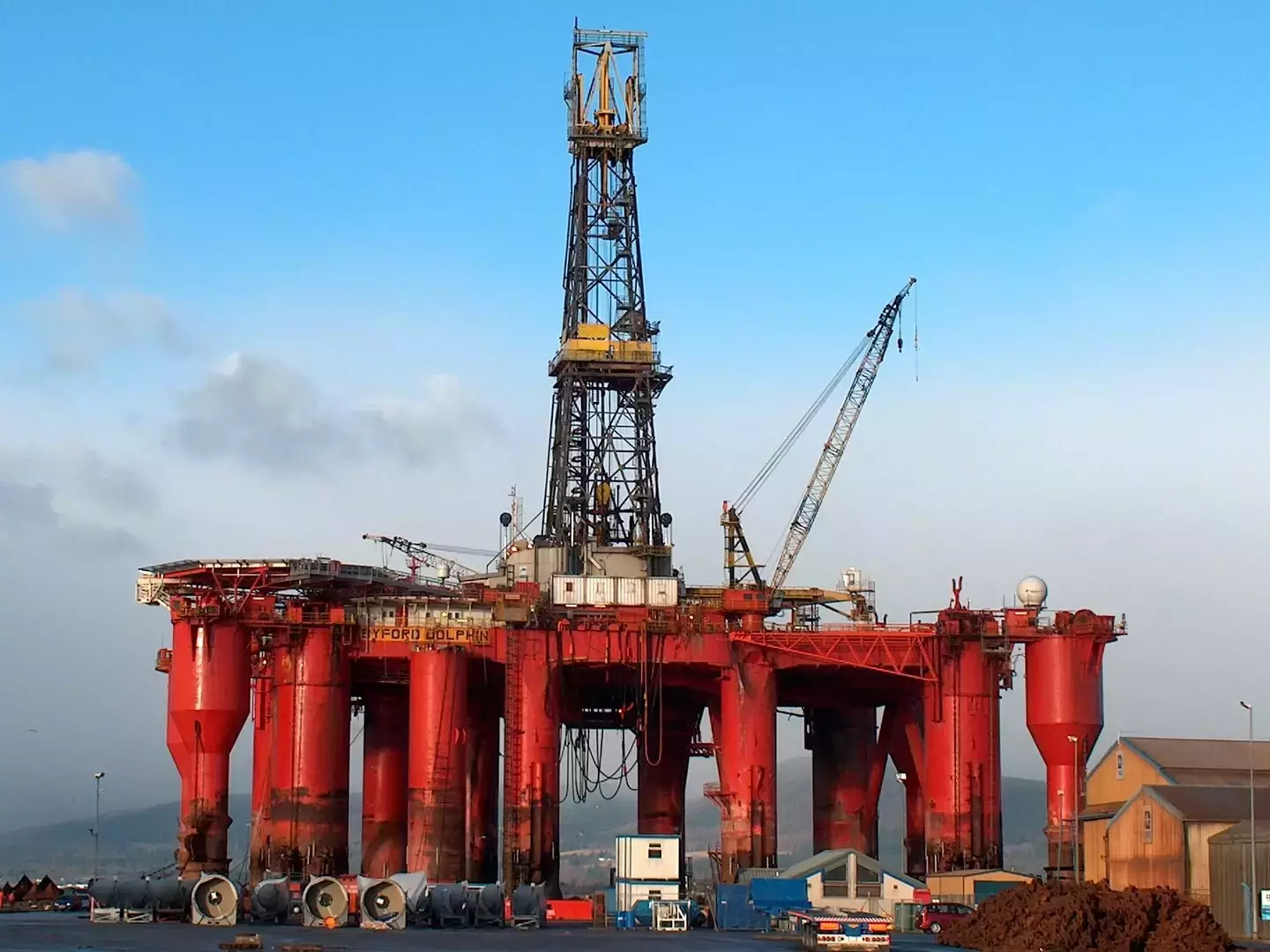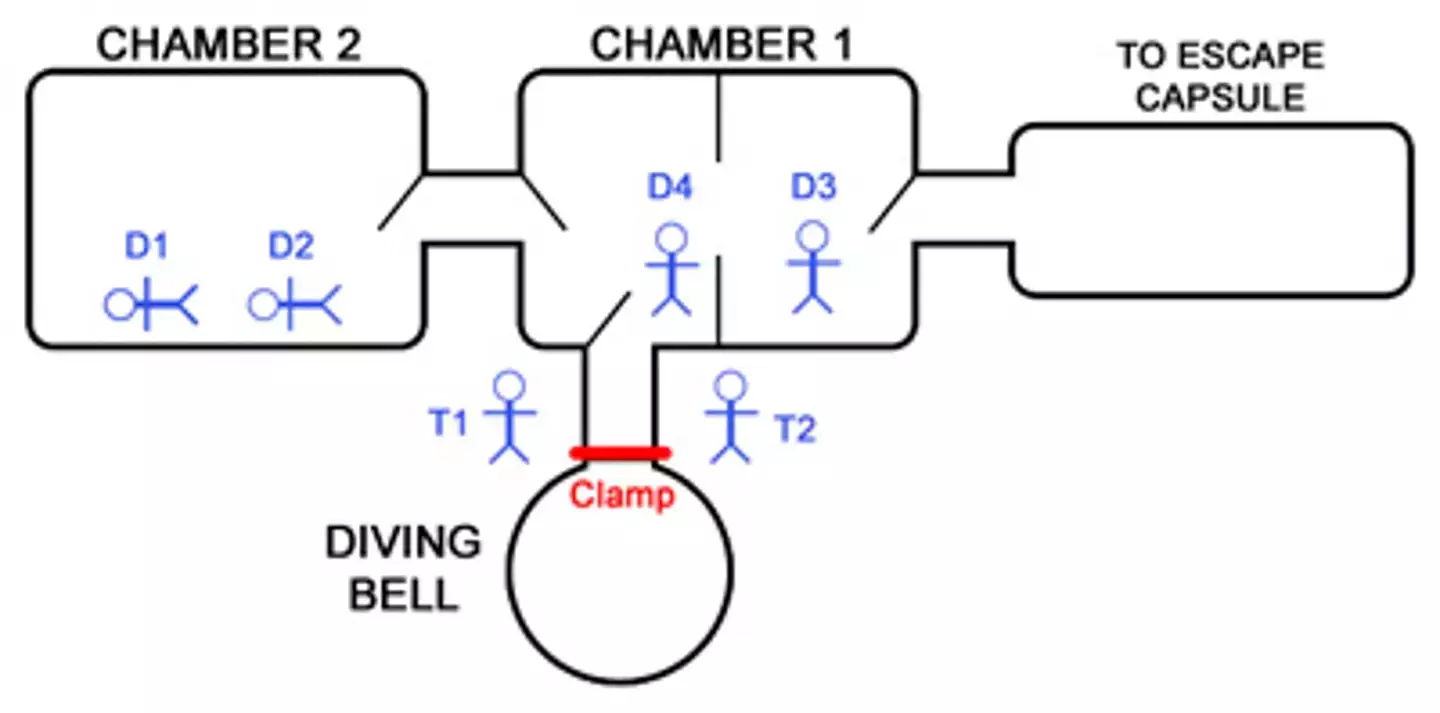
There are plenty of grisly ways that people have left this world, but the victims of the Byford Dolphin accident arguably suffered one of the most harrowing deaths in history.
Although the Frigg Gas Field situated in the Norwegian sector of the North Sea has been the site of several serious incidents, the tragedy which unfolded there in 1983 is what the oil rig is infamous for.
Only one of the group of six made it out alive, albeit with critical injuries, when the freak accident took place on 5 November, 1983, while they were 'saturation diving'.
Advert
Four divers and one dive tender were killed in some of the worst ways possible while they were working on the semi-submersible platform deep underwater over four decades ago.
The term 'saturation diving' refers to a method of diving which involves workers heading around 1,000 feet below the surface to carry out construction and maintenance work on structures such as oil rigs.
During these lengthy periods - which can last for up to 28 days - the team are forced to live in a complex of decompression chambers which gradually reduce pressure and eliminate any gases which may be trapped inside.
Advert
Divers Edwin Arthur Coward, 35, Roy P. Lucas, 38, Bjørn Giæver Bergersen, 29, and Truls Hellevik, 34, were on the job alongside dive tenders William Crammond, 32, and Martin Saunders, who were there to assist them.
Due to them working at such extreme depths for long durations, the team also needed to breathe pressurised air to dissolve any nitrogen which had dissolved in their bloodstream.
Resurfacing after diving to the bowels of the ocean comes with a lot of risks, as rising too quickly can cause the nitrogen to form bubbles in the body, a condition commonly called 'the bends'.

This six-some had been living in a pressurised facility, which included living quarters, while they used a diving bell - which was separate from the other units and sealed off - to transport themselves to their required depth to work.
Advert
It would take them days to reach the surface if they used the same technique to decompress as recreational divers, so the entire maintenance mission hinges on the diving bell.
"By staying compressed, they can work out there for as long as they need to, and when you bring them back up, you don't need to worry about decompression," Phillip Newsum, an experienced commercial diver and executive director of the Association of Diving Contractors International, told How Stuff Works.
But when this contraption isn't used correctly, this is an automatic 'death sentence'.

While some of the crew were returning from a dive, the diving bell was fatally released too soon, before the doors were closed - meaning that both chambers, including their living quarters, were instantly decompressed.
Advert
The protocol was for the diving bell to detach when the chamber doors were safely sealed shut, but as they did not close, it created an 'explosive decompression'.
The area in which the crew were housed went from nine atmospheres down to one - the normal surface air pressure - in a split second, sending air rushing out of the chamber system and leaving the bell swinging.
Crammond was killed after being hit by the dive bell as it flew away, while fellow dive tender Saunders was seriously injured after being struck by it.
Divers Coward, Lucas and Bergersen faced an even worse fate.
Advert
The rapid depressurisation made the nitrogen in the trio's blood turn into bubbles, effectively boiling them from the inside.

Hellevik suffered the most gruesome passing out of the all of them, though.
He was standing in front of the partially opened door to the living chamber when the deadly error was made and the pressure was released, resulting in his body being sucked through a frighteningly small hole.
Hellevik's entire skeleton was forced through a 60cm gap, meaning his body was 'fragmented' as the internal organs in his chest and abdomen were expelled by the pressure and strewn around the pod.
Some parts of him being found ten metres away.
The Byford Dolphin incident was attributed to an engineering failure and an outdated diving system, but the families of the victims only received undisclosed amounts of compensation from the Norwegian government in 2009.
Saunders was the sole survivor.
Featured Image Credit: YouTube/StorifiedTopics: Health, History, World News